Adaptive Calendar:
Aligning Productivity with Emotional Well-being
The Adaptive Calendar is an innovative digital time management tool designed to balance productivity and emotional well-being by aligning users’ schedules with their natural rhythms and emotional states.
Data Visualization
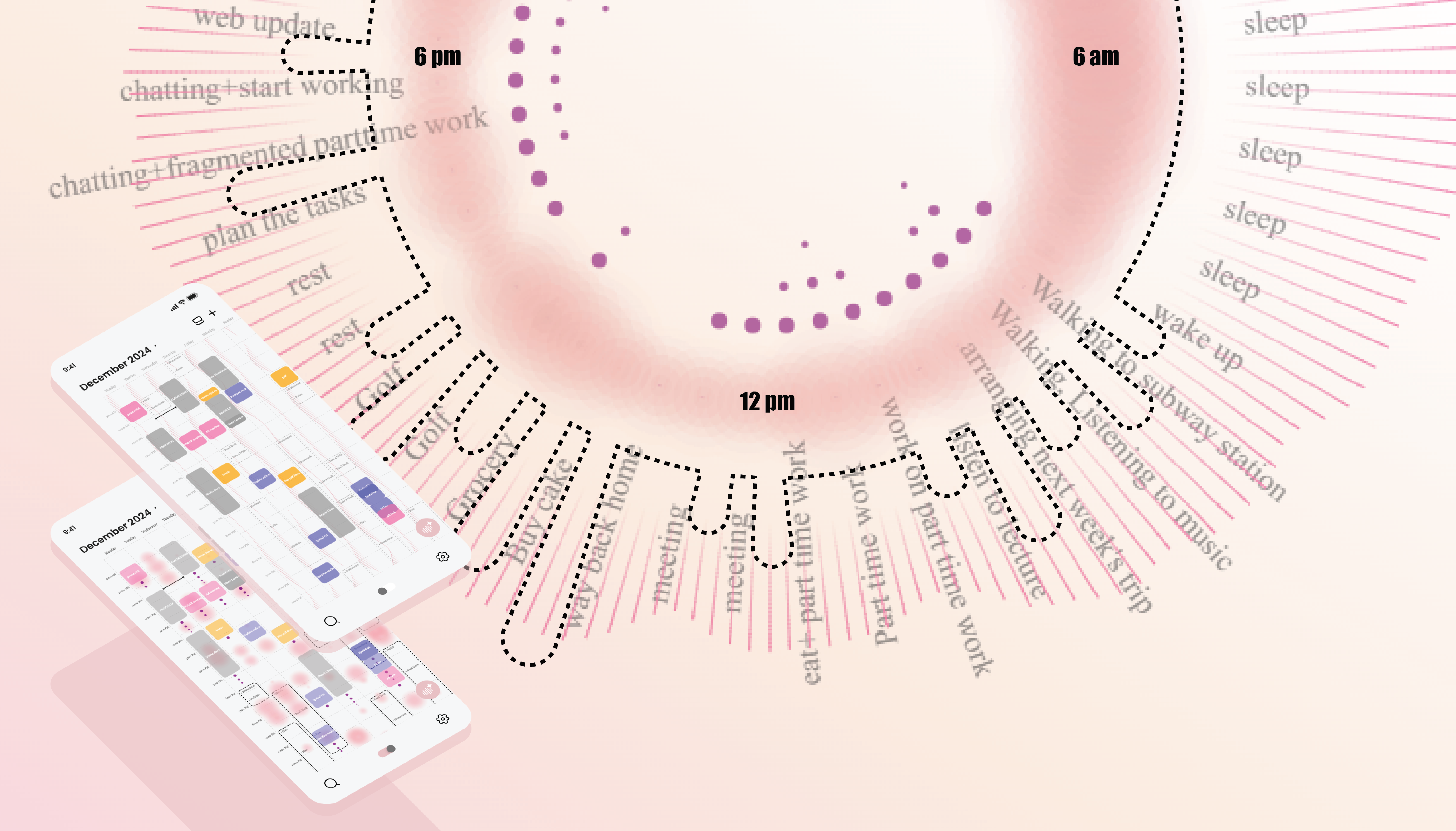
Problem Statement
Challenge
Traditional calendar systems fail to consider individual emotional dynamics and biological rhythms, often causing stress, inefficiency, and burnout due to chaotic schedules and poor work-life balance. This results in:
1. Increased emotional fatigue due to misaligned task timing.
2. Low productivity caused by rigid and static scheduling methods.
3. Difficulty adapting to unpredictable workloads and emotional fluctuations.
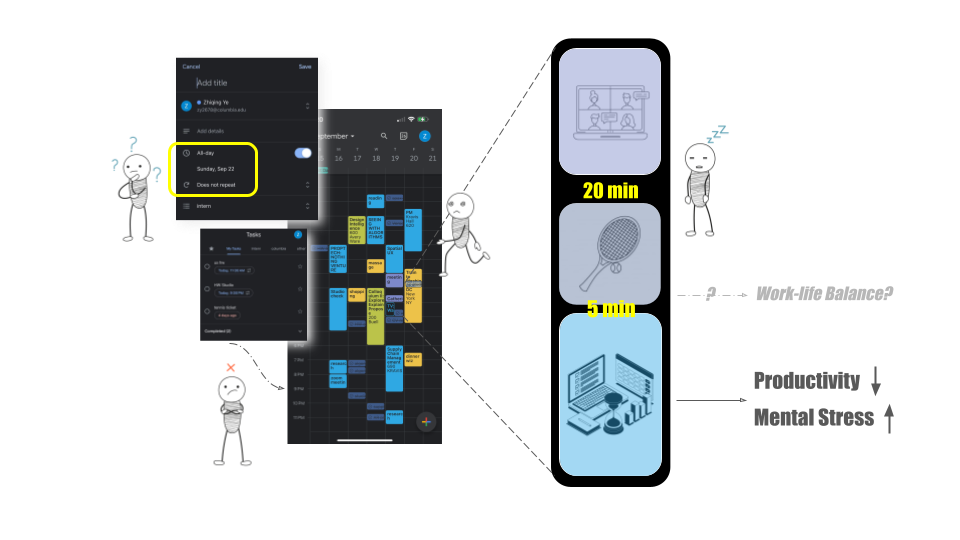
Goal
The Adaptive Calendar overcomes these challenges with personalized scheduling that aligns with biological rhythms and emotional feedback, predictive task planning to reduce cognitive strain, and a flexible structure that adapts to real-life energy and emotional fluctuations.
Research & Insights
Ethnographic research:
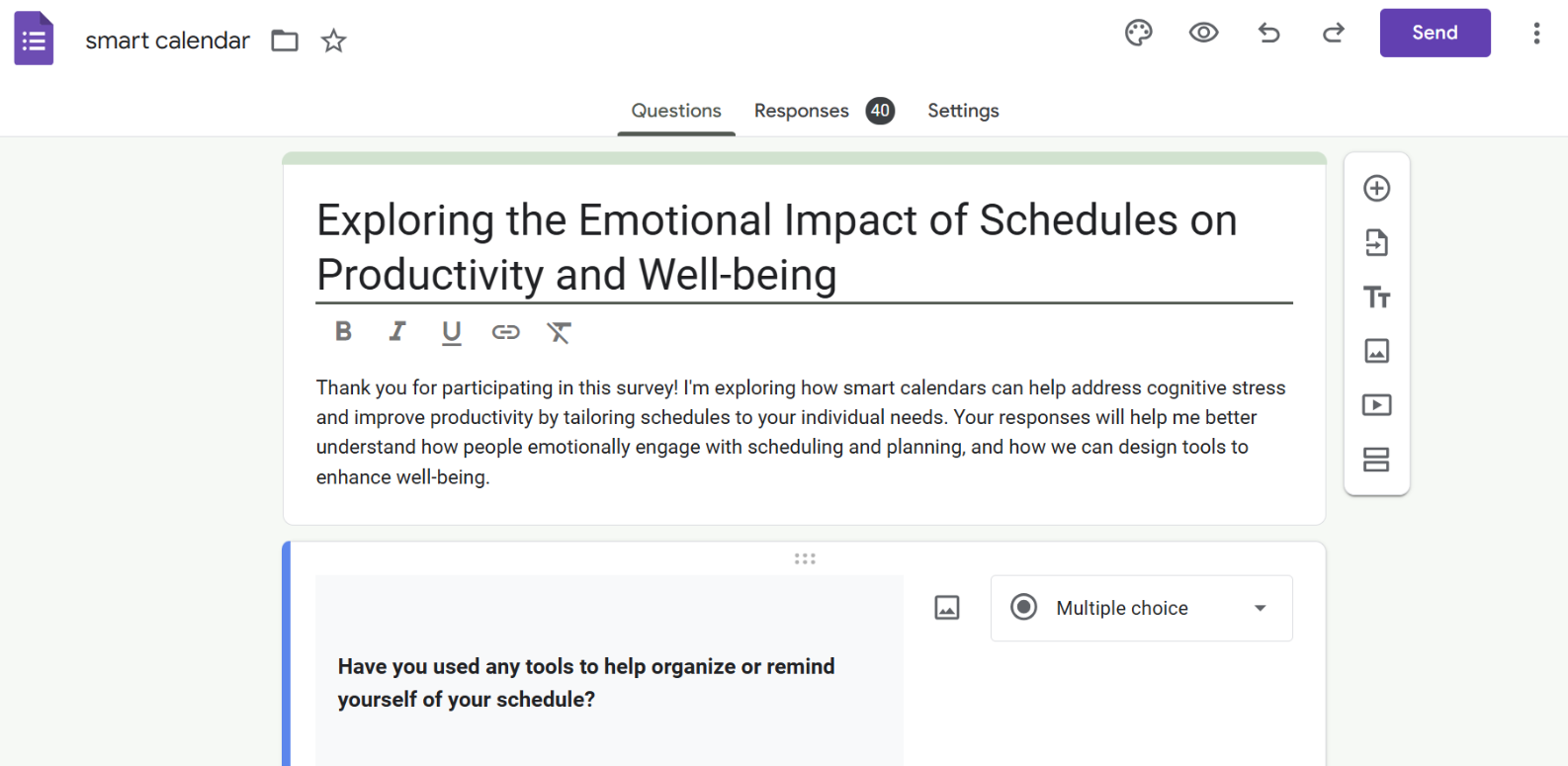
43.6% of participants prefer a balance between rigid schedules and flexible task lists.
72% want real-time schedule adjustments based on their mental or physical state.
57.7% seek predictive insights on task duration to improve time estimates.
65.2% prefer scheduling tasks based on energy levels.
Nobel Prize-recognized research:
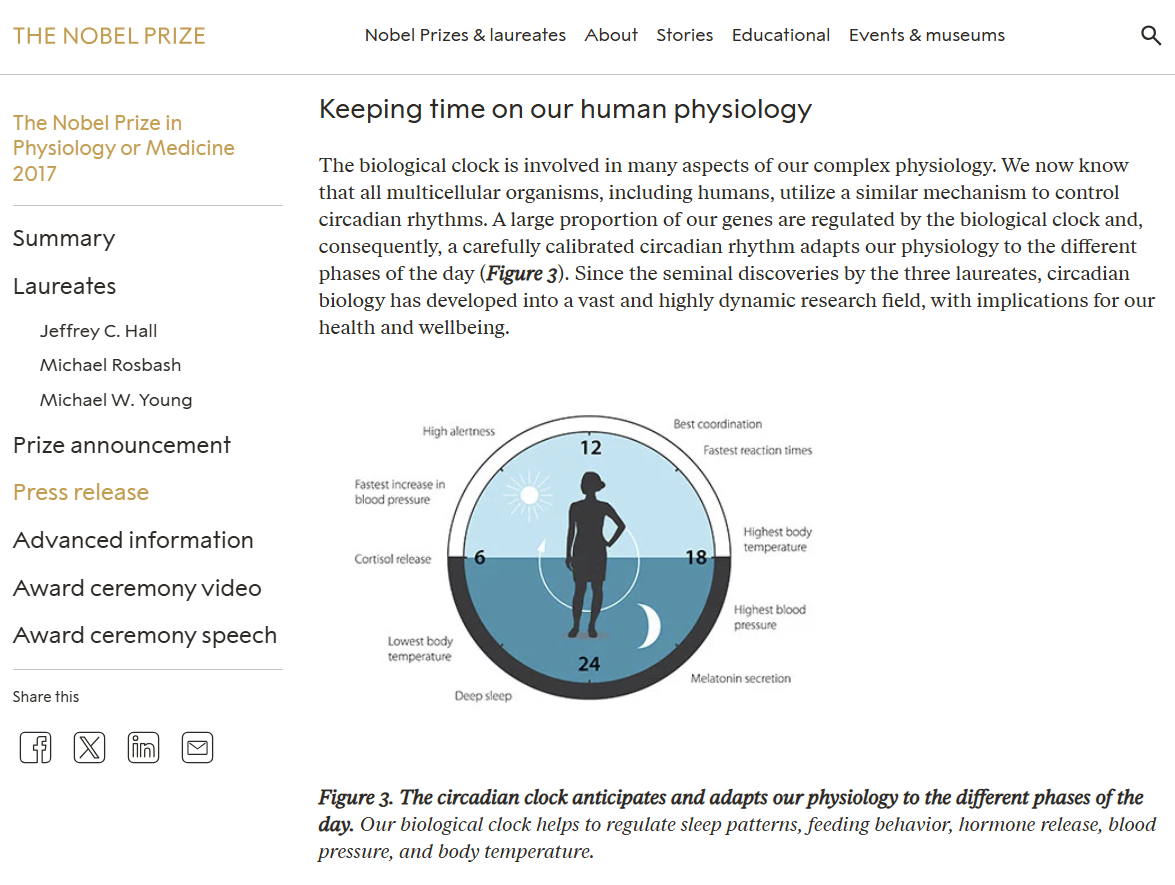
.png)
Circadian rhythms optimize task scheduling by aligning peak productivity and rest periods, enhancing both efficiency and well-being.
Data Visualization
1. Intense login (one-day journal)
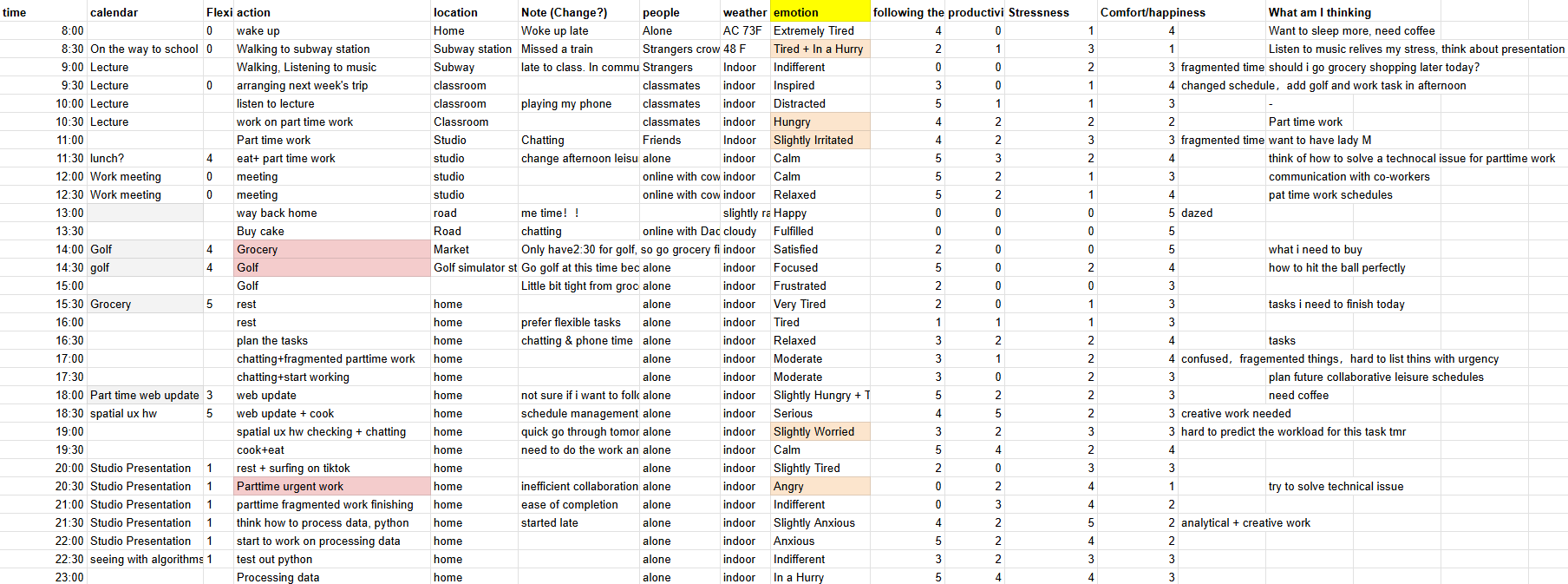
2. Visualization
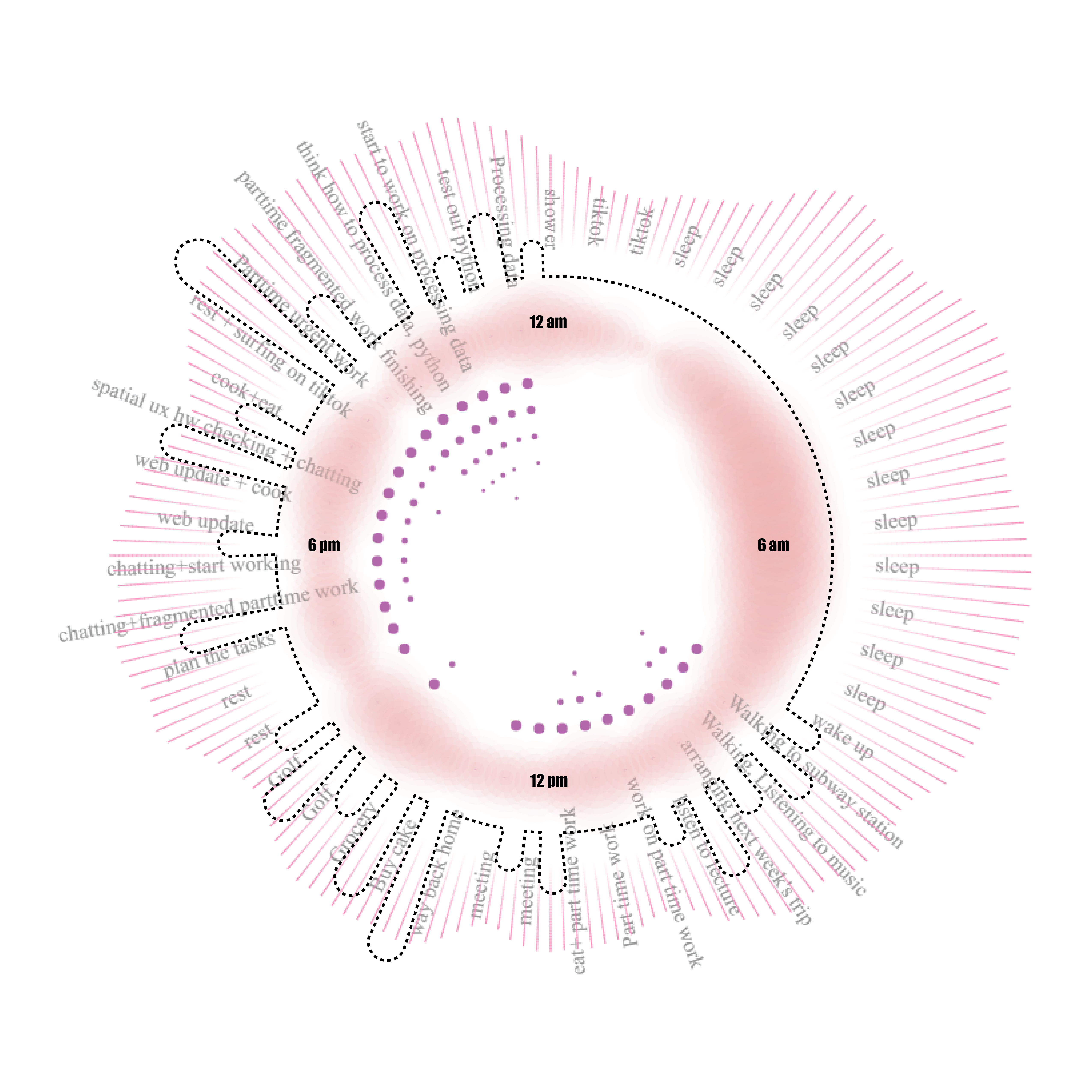
Prototype
How it works
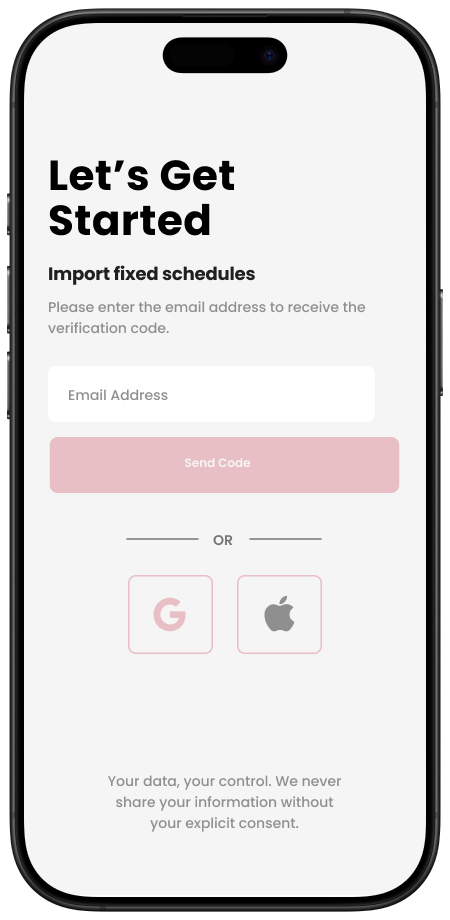
Getting Started!
Import Google Calendar data by Google API or manually type-in your schedules.
.png)
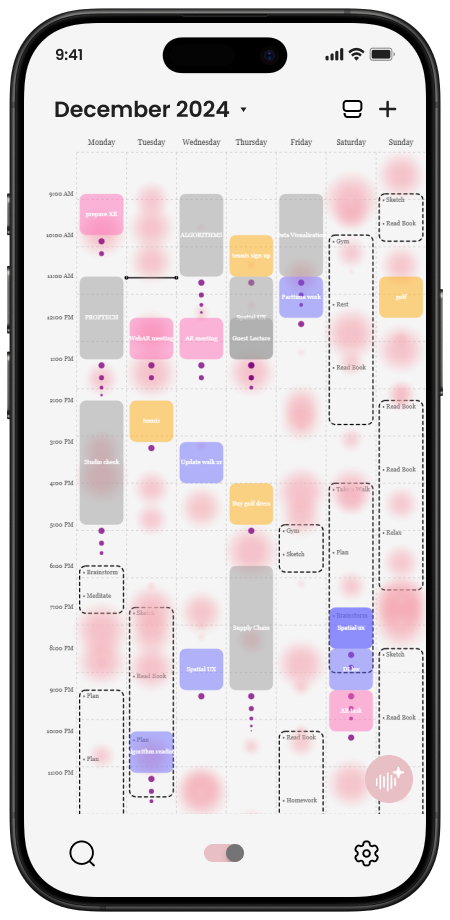
Moderate your schedules with emotion feedback
Discover what's missing between calendar schedules and the real actions...
Text-based emotion analysis system:
Use natural language processing (NLP) models (e.g., BERT or GPT-based models) to interpret user inputs.
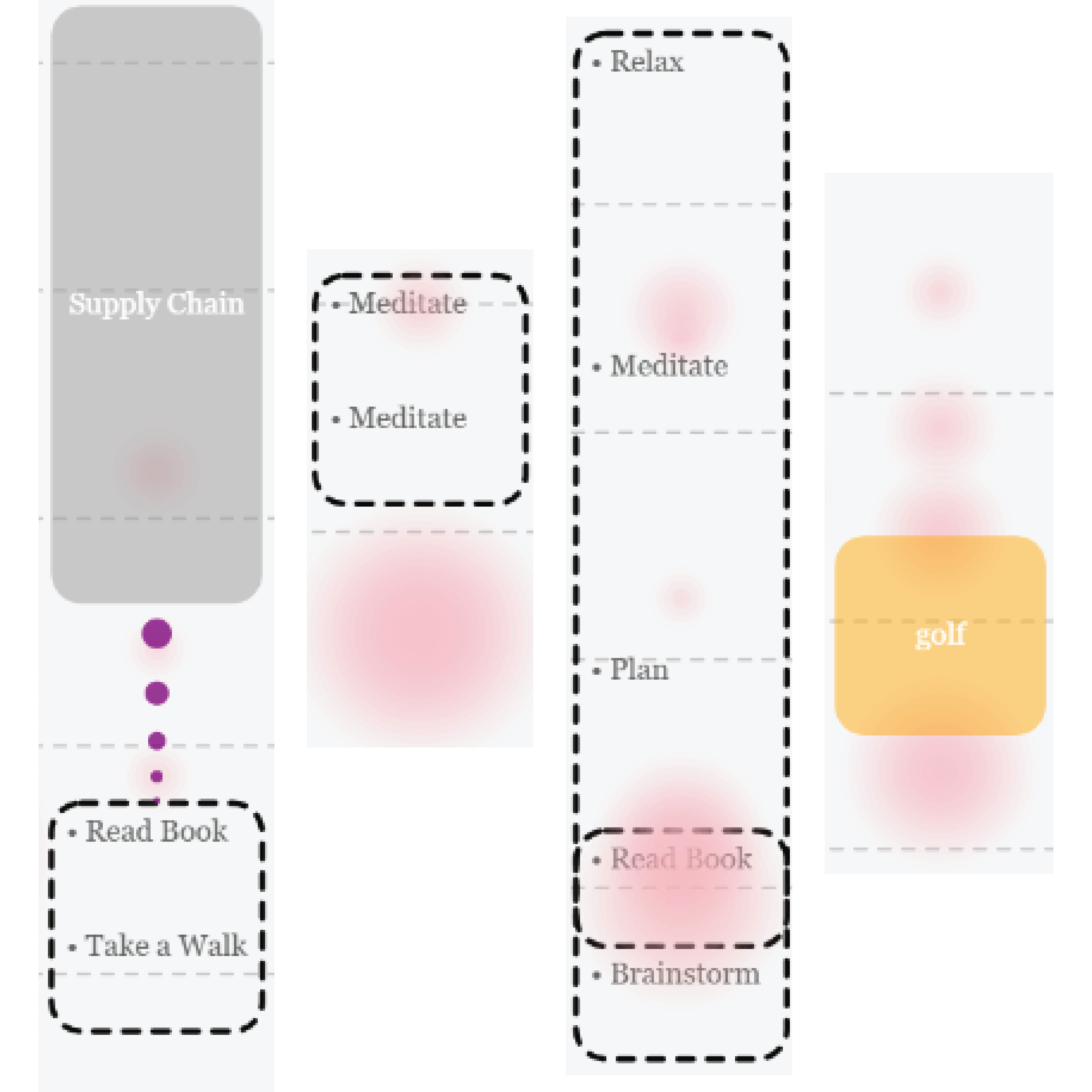
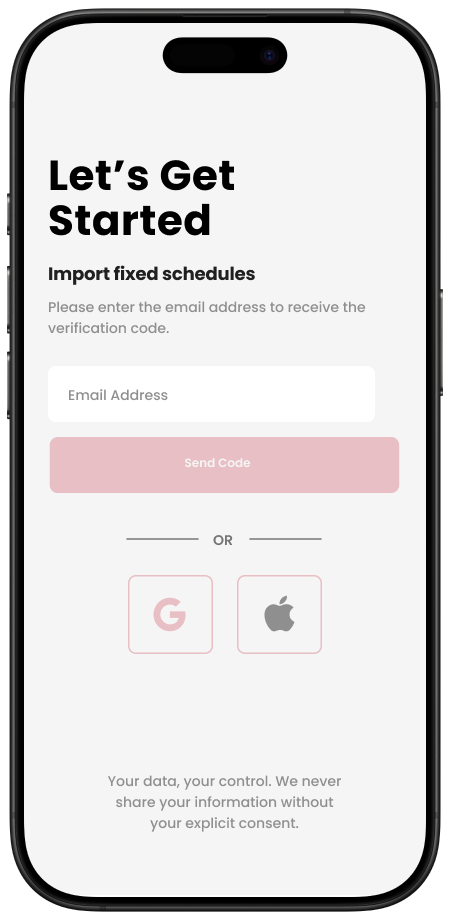
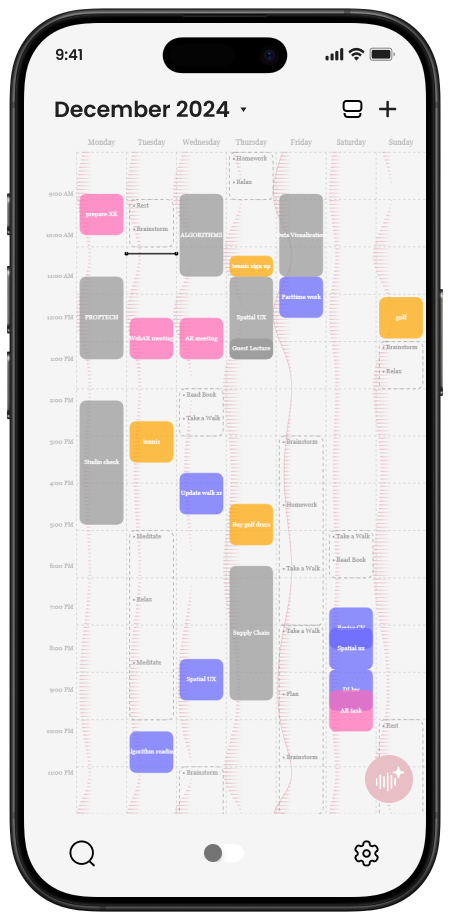
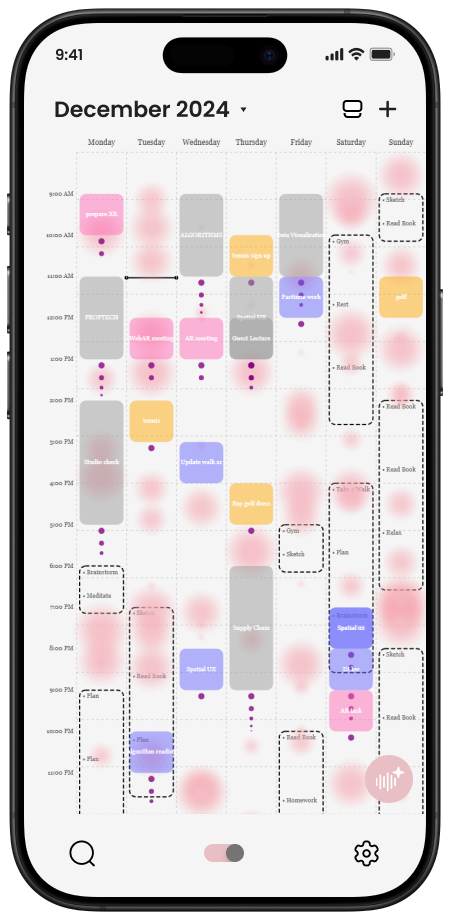
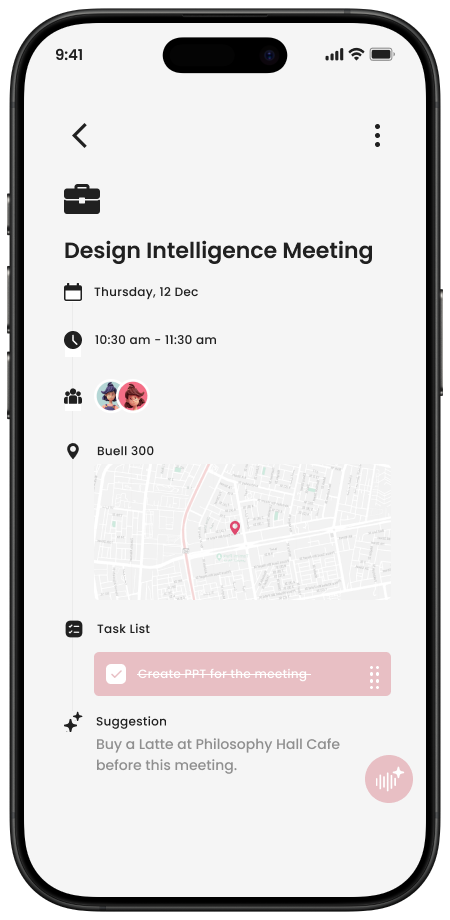
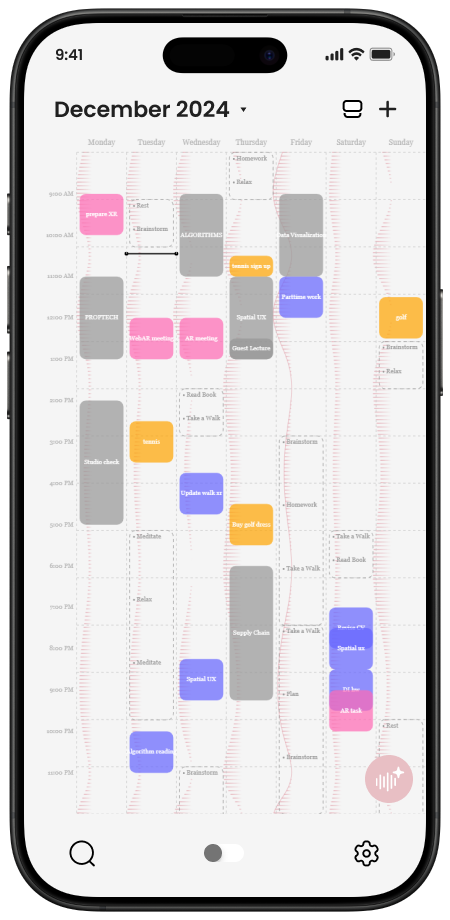
Elevate Productivity with your own pace
A personal LLM apply circadian rhythm onto the calendar...
.png)
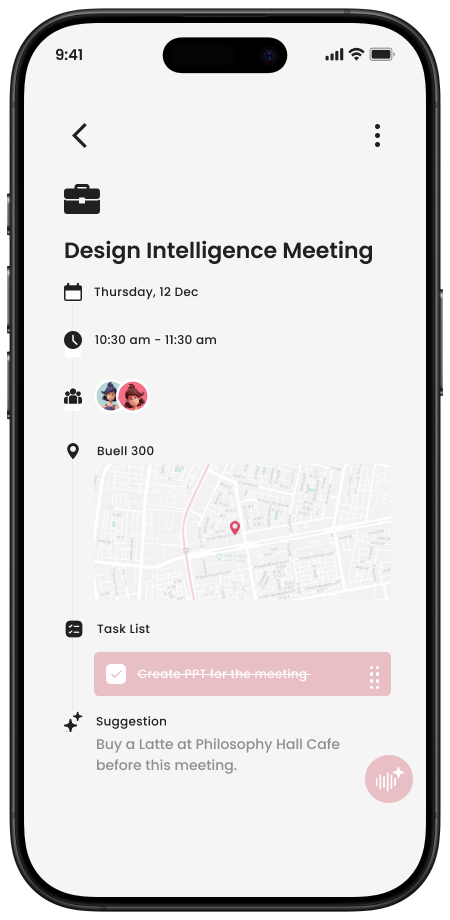
Simple way to schedule personal or group tasks
Open AI text feedback to schedule a task...
Off-screen version of scheduling tasks
By using OpenAI text feedback, users can quickly schedule tasks by simply describing them in natural language. The system understands the input and intelligently suggests optimal times based on the user’s calendar and preferences, all within a spatially organized and intuitive interface. The spatial UX design allows users to visually interact with their schedules, making task management more efficient and accessible. Whether managing solo projects or coordinating with a team, this feature streamlines the scheduling process, offering a seamless, interactive experience that adapts to the user’s needs.
Persona

Sarah Mitchell
Remote Worker
- Dynamic adjustment of schedules based on real-time workload.
- Environmental enhancements to improve focus and reduce eye strain.
- Notifications for breaks and exercises to maintain mental and emotional health.

Laura Evans
The (EAP) Manager
- A solution for physical and emotional well-being addressing workload and environmental stress.
- Real-time analytics for monitoring stress levels and preventing burnout.
- A scalable, adaptable system tailored to diverse employee needs and stress factors.

Mei-Lin Zhang
Mother
- Organizational tool for children's daily tasks to reduce cognitive stress.
- Real-time monitoring with wellness suggestions for children's balance.
- Adaptable home environment that promotes focus and relaxation during study.